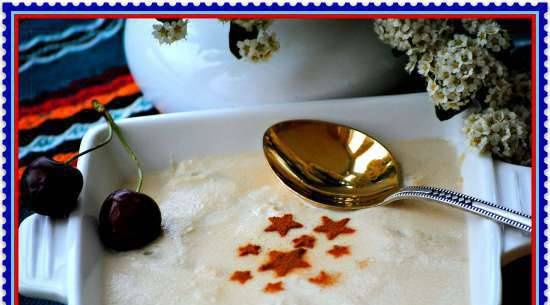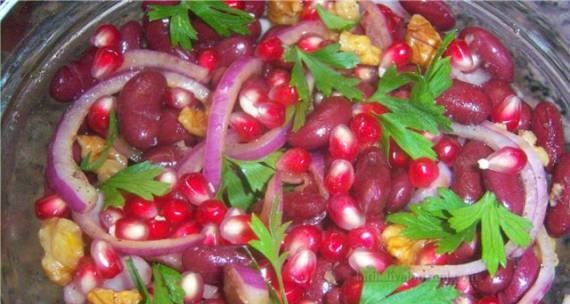|
 The territory of the Cesar department is located in two Colombian regions, the Andean and the Caribbean, where before the European conquest, initiated by the German Ambrosio Alfinger in 1530, lived two Indian groups, close in culture - the Caribbean and the Arawak, which gave a great cultural and gastronomic heritage. The territory of the Cesar department is located in two Colombian regions, the Andean and the Caribbean, where before the European conquest, initiated by the German Ambrosio Alfinger in 1530, lived two Indian groups, close in culture - the Caribbean and the Arawak, which gave a great cultural and gastronomic heritage.
Crossed by numerous rivers with fertile valleys, the region is divided into four agricultural regions that produce coffee and various agricultural products and have their own specific nutrition.
In the northern part of the department, the consumption of fish with cassava, rice, coconut, sycamore and yam predominates, and in the southern part - corn, beans, beef, tamales and vegetable soups. In addition, typical products include wild coyol fruits used to make juices, jam and wine, as well as fish - catfish, bokachiko, trachira, trapon, sea bream and others.
The most important legume is black beans, the only one available to many families in some of the Caribbean municipalities of Cesar. In the regions of the Andean region there is a greater variety - rice, white, pink, black beans, pigeon peas and others. Of particular importance is the Viyorro variety from the municipality of Rio de Oro, the main ingredient in corned bean soup and all-vegetable soup macha.
 The most typical dish of the Magdalena and Cesar river valleys is viuda de pescadotypical of the common Colombian cuisine. Its main components are - fish, potatoes, sycamore and cassava. “Viuda” translates as “widow”, and the name of the dish corresponds to the legend about an unfaithful fisherman husband, killed by a deceived wife, who, after revenge, committed suicide and turned into a ghost who appeared to fishermen. A joint meal helped to drive away the fear of a ghost - fish cooked in the leaves of a banana tree in a wood-fired oven with vegetables and spices on the banks of the Magdalena. Over time, the recipe has changed, and today viuda de pescado is prepared like a stew with broth and Creole sauce, and served with white rice and avocado. The most typical dish of the Magdalena and Cesar river valleys is viuda de pescadotypical of the common Colombian cuisine. Its main components are - fish, potatoes, sycamore and cassava. “Viuda” translates as “widow”, and the name of the dish corresponds to the legend about an unfaithful fisherman husband, killed by a deceived wife, who, after revenge, committed suicide and turned into a ghost who appeared to fishermen. A joint meal helped to drive away the fear of a ghost - fish cooked in the leaves of a banana tree in a wood-fired oven with vegetables and spices on the banks of the Magdalena. Over time, the recipe has changed, and today viuda de pescado is prepared like a stew with broth and Creole sauce, and served with white rice and avocado.
The César Department is one of the symbols of Colombian musical culture and the Vallenato in particular. Part of the tradition is to gather outside musicians and fans to play the accordion, sing and have fun. Such meetings are called "parranda vallenata", it is an expression of friendship and recognition. Parranda Vallenata cannot pass on an empty stomach, and most importantly her treat, sancocho vallenato, is a beef rib soup with a variety of tubers, pigeon peas, green vegetable bananas, corn and condiments. Poultry or goat meat is often used instead of beef, and soup is served in a bowl of calabash fruits, from which maracas and guiro are also made.
Sancocho trifasico the composition of the ingredients is similar to the vallenato, but it includes three types of meat at once - beef, pork and chicken. In addition, ripe bananas and a little orange juice are added to this soup.
In the valleys of Cesar, it is common to cook meat in the form of hot asado. So, for example, for chivo asado goat meat is first marinated for several hours in lemon juice and vinegar with vegetable oil, garlic, onions and herbs, and then grilled until golden brown. Carne Asada - beef baked in the oven with white wine, olive oil, cloves, garlic and carrots. Serving meat is accompanied by potatoes, rice or cassava.
A special place among such dishes is doggy meat (carne a la perra), the recipe for which belongs to medieval Jesuit priests. Initially, its specificity consisted in baking parts of a calf carcass in an earthen hole, and now it uses clay wood stoves and electric and gas ovens... The bones must be removed from the meat, but not the skin from which the baking bag filled with spices is formed, and the cooking time depends on the volume at the rate of 6 hours / 25 kg. Carne oreada - another type of roast, representing beef fried with grated onions.
Elena
|
 The territory of the Cesar department is located in two Colombian regions, the Andean and the Caribbean, where before the European conquest, initiated by the German Ambrosio Alfinger in 1530, lived two Indian groups, close in culture - the Caribbean and the Arawak, which gave a great cultural and gastronomic heritage.
The territory of the Cesar department is located in two Colombian regions, the Andean and the Caribbean, where before the European conquest, initiated by the German Ambrosio Alfinger in 1530, lived two Indian groups, close in culture - the Caribbean and the Arawak, which gave a great cultural and gastronomic heritage.









